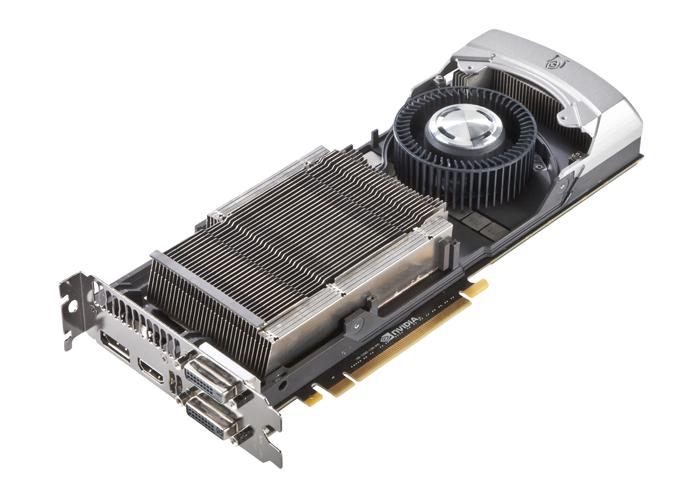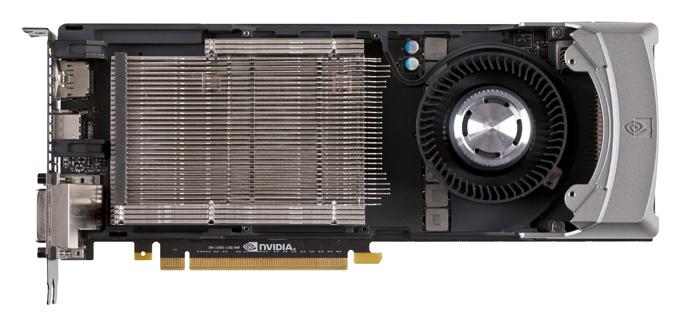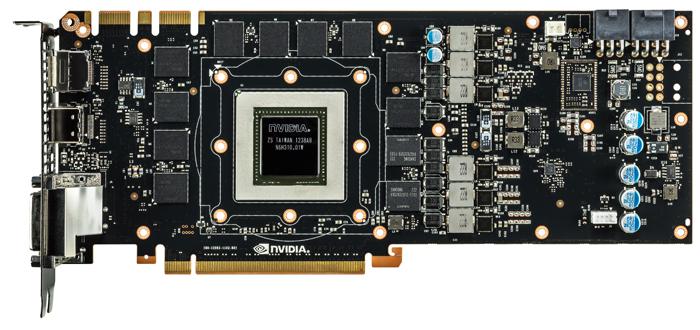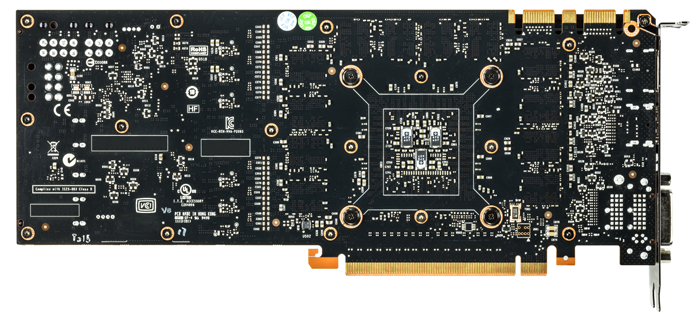Product Showcase
One of the key ingredients to the 790 is its high performance vapor chamber cooling. Built from copper, this vapor chamber draws heat off Titan's GK110 GPU using an evaporation process that’s similar to a heatpipe, but more powerful. To further improve the vapor chamber’s effectiveness, Nvidia used a new thermal interface material from a company named Shin-Etsu that boasts over 2X the performance of the grease used on GTX 680.
With this new grease and a copper vapor chamber, they’re able to draw more heat off the GK110 chip, ultimately allowing the GPU to run cooler and thus boost to higher clock speeds. This heat from the vapor chamber is then dissipated by a large, dual-slot aluminum heatsink.
GeForce GTX 780 and Titan also features an extended fin stack, the heatsink fins actually extend beyond the base of the vapor chamber, increasing cooling area. GeForce GTX Titan also has an aluminum baseplate, which provides additional cooling for the PCB and board components. And finally, a blower-style fan exhausts hot air out the back of the system chassis. To ensure the quietest gaming experience possible, acoustic dampening material is used in the fan to minimize unwanted noises, similar to GeForce GTX 680’s fan.
A 6-phase power supply with overvoltaging capability is responsible for supplying 780 / Titan’s GK110 GPU with power. An additional 2-phase power supply is dedicated for the board’s GDDR5 memory. This 6+2 phase design supplies Titan with the power it needs. Tweaked we’ve seen Titan boards with reference cooling hit speeds of 1.1GHz in our own testing!





